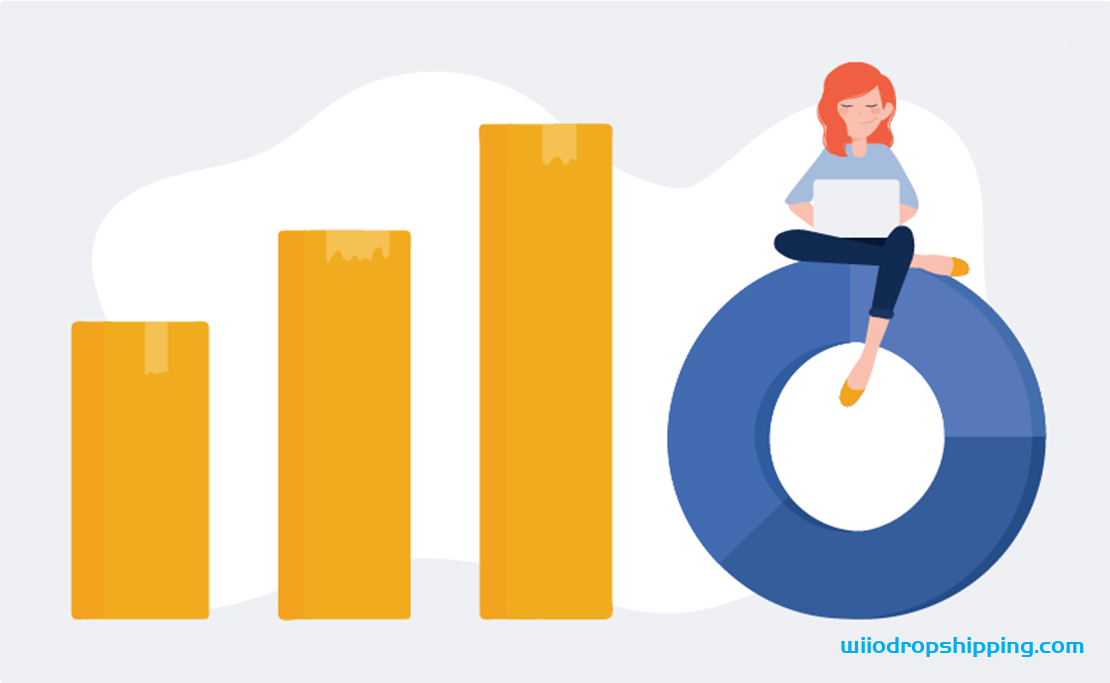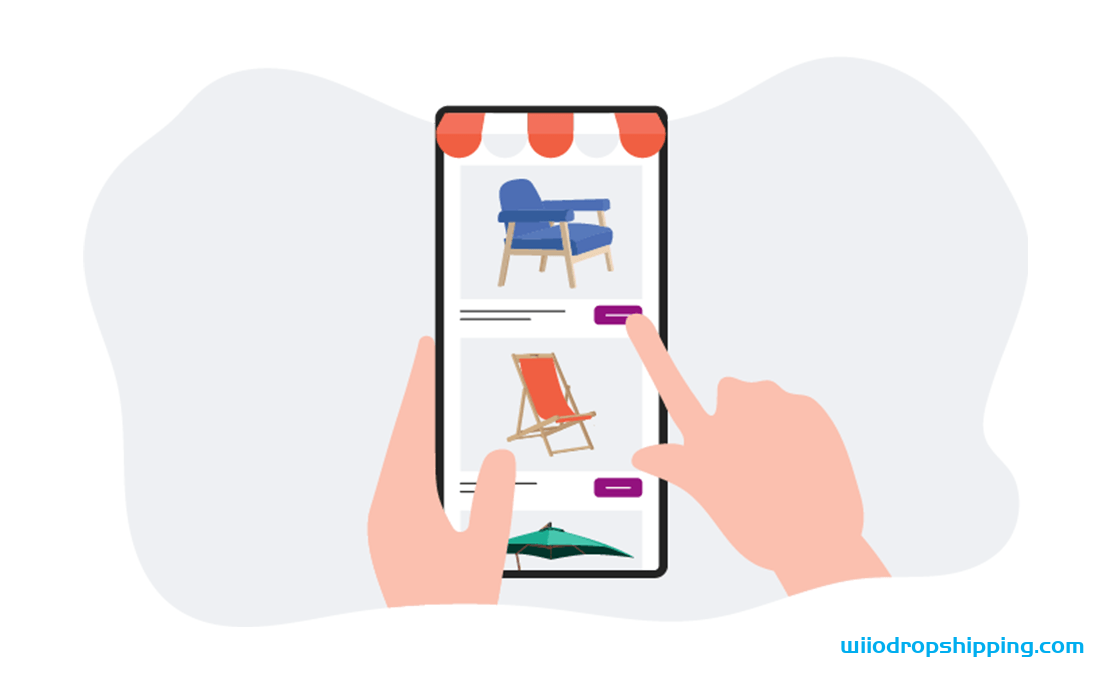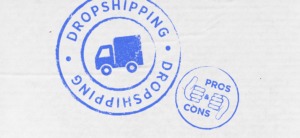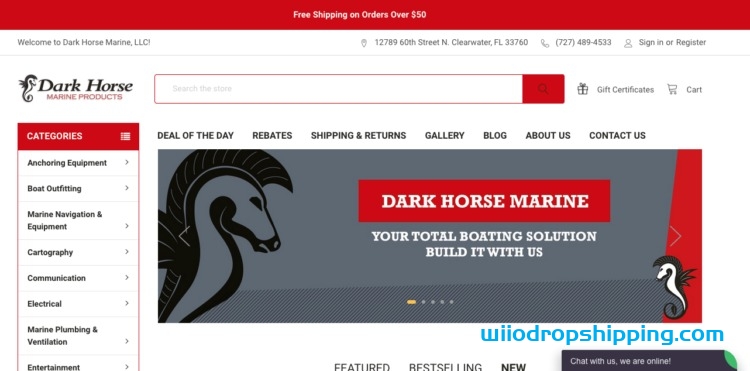Physical Address
304 North Cardinal St.
Dorchester Center, MA 02124


The dropshipping industry is expected to grow by $557.9 billion by the end of 2025. Yet some people are questioning if dropshipping will work in 2021? The answer is yes!
In fact, the same question arises for a lot of platforms and businesses every year. Remember, it is the way of work that changes from time to time, but the basics of a business remain the same.
More than 27% of the retailers use dropshipping and make 50% more profit than a regular retail business. With such a huge profit margin, dropshipping is definitely here to stay. Here are some of the reasons why dropshipping will work in 2021.
The collapse of the global economy in 2020 was inevitable due to the ongoing pandemic. But, economists have predicted a 5% rise in global purchasing power, which means more people will be able to buy things. In the US, the competition is already tough, but with the rise in purchasing power across Europe, and other countries, you can set up a store aiming to sell in different regions.
Unlike the 90s, more than 60% of people have internet access (even in developing countries). With these rising stats, the internet is going to be everywhere, which means your products will be available to everyone. For those who are planning to start their dropshipping business, there is no better time than this.
In a recent survey, it was found that 79% of smartphone users have bought something online in the last 6 months. Consumers prefer to shop on-the-go and expect a convenient shopping experience. Set up a responsive store for your dropshipping business and make it mobile-friendly to attain maximum benefits.
One of the biggest concerns of an e-commerce business is the investment in inventory. Dropshipping eliminates the cost of buying and storing inventory. You can simply start by creating an online store and as you proceed, you have the liberty to make adjustments. The scalability of the business is higher than what you will find in other low-investment businesses.
For a decade, there has been a swift rise in the number of people looking for unique products like handmade gifts, ornaments, décor, and attire. This has led to the rise of platforms like dropshippingXL, where you can find a wide range of products. Traders can easily find a good amount of products belonging to a niche where there is less competition.
The technological developments we are witnessing in the dropshipping business point towards its success story. Certain parts of a dropshipping business include repetitive and time-consuming actions. To minimize the operative burdens dropshippers are continually utilizing automation. Repetitive processes like setting up prices, importing products, tracking orders, and promotions can be automated to reduce burden on resources.
With a rise in customer demands and availability of dropshipping service providers, dropshipping is one business trend, which is definitely going to stay.


The Truth About Dropshipping: The Good, The Bad, and The Ugly
GET THE PRINT VERSION
Tired of scrolling? Download a PDF version of our dropshipping article for easier offline reading and sharing with coworkers.
Dropshipping is an order fulfillment method that does not require a business to keep products in stock. Instead, the store sells the product, and passes on the sales order to a third-party supplier, who then ships the order to the customer.
However, contrary to popular belief, dropshipping is not a get-rich-quick scheme.
Sure, it seems like easy money — you sell other people’s goods and take a cut for yourself — but when you factor in all the drawbacks, obstacles, and day-to-day management, it’s far from easy.
However, if you approach it the right way, and use the proven strategies below, dropshipping can still help you build a successful business…just not as quickly as you’d hoped.
Let’s put it this way: if you’re only doing dropshipping, it’ll be difficult to get your business off the ground; but, if you’re already established in ecommerce, you can use dropshipping to complement your existing services and improve your business.
In this guide, we walk through all the problems with dropshipping that aren’t as publicized as its perks. But despite its flaws, dropshipping can still be a powerful tool for ecommerce brands, as long as it’s used properly.
We’ll also explain the ways to do dropshipping right, and showcase some company case studies to illustrate what we’re talking about.
If you’re a beginner to dropshipping, you may want to check out the FAQs at the bottom before reading the bulk of this guide. We stray into some advanced topics, so it’s better to have some background.
Before you put all your savings into a new dropshipping business… don’t!
It’s difficult to maintain a business doing dropshipping alone, let alone start one from scratch.
Here’s why:
Sure, since you don’t have to manage or store your own inventory, the overhead is low — but so are the returns.
You put less money in, but you get less money out. That means you have to do a lot of business just to stay afloat, let alone turn a profit.
Think about it this way: every sale you make, most of that money goes to the supplier.
What you earn is basically skimmed off the top.
That’s hardly enough to cover your expenses for marketing/advertising, maintaining your site, managing sales orders, and covering your office hours.
According to Fit Small Business, you can predict your income using these variables (they’re averages, so they’ll change depending on your industry and situation):
You can then calculate a working estimate using this equation:
(Traffic x 0.02) x (Avg order value x 0.2) = Profit
While this is fine for a quick starting estimate, there are a few problems you also have to consider:
On top of that, you’ll notice that your profit is also largely determined by your traffic, so if you’re building an ecommerce brand from scratch, you’ll be struggling for a long time as you build a client base.
Plus, according to Adam Enfroy from BigCommerce, dropshipping is a lot of work no matter how you dice it. Although it seems hands off, dropshippers always have to deal with their wholesale suppliers, order processing, returns, and customer service.
It’s much more reasonable to approach dropshipping when you already have a regular source of traffic.
There will always be overly optimistic entrepreneurs who focus solely on the “low overhead” part, ignoring the clear evidence above.
Because very little capital is required to start a dropshipping business, that low barrier to entry means a lot of competition, with the most popular markets suffering more than others.
Basically, the bigger a company is, the more they can reduce their markups to offer the lowest prices.
Reiterating what we said above, smaller businesses have to cut into their profits just to stay competitive with their prices, and at a certain point, it becomes unsustainable.
To make matters worse, chances are you don’t have an exclusive deal with your suppliers.
That means any number of competitors could be selling your exact same products. And if you’re just starting out, your rivals with years of experience have the resources you don’t to undercut your prices.
That means customers can buy the exact same thing from someone else for cheaper — why would they buy from you?
In standard ecommerce, if customers complain about product quality, fulfillment speed, or return policies, you can address the problems yourself.
In dropshipping, you’re more or less at the mercy of your supplier — but you’re the one who still has to talk to your customers directly.
Dropshippers are essentially trapped, doing little more than hoping the supplier addresses the problems while simultaneously reassuring the customer about something that’s out of their control.
On top of that, there’s also a delay in communication as the dropshipper goes back-and-forth between the customer and the supplier. If one answers slowly, all communication grinds to a halt and the problems take longer to fix.
In ecommerce, customer service is paramount.
Even the slightest transgression — such as a delay in communication — pushes your customers right into the hands of your competitors.
And if they’re vocal about it, those bad reviews early on could end your business before it even starts.
Although this isn’t a common problem for dropshippers, it’s worth mentioning. Some suppliers aren’t as legitimate as they claim, and you don’t always know where the merchandise comes from.
Even more deceptive is when suppliers illegally use a trademarked logo or another company’s intellectual property, which happens more than average.
Whatever illegal activities your suppliers are up to, as their vendor you’re automatically complicit.
This potential problem can be rectified with a solid Dropshipping Agreement Contract, but not every dropshipping upstart knows that.
It’s something you’ll want to keep in mind when choosing suppliers.
Like ghostwriters or behind-the-scenes songwriters, dropshippers must understand that the credit for their work goes to someone else.
If whatever product you’re selling is so amazing, your customers are going to focus mostly on the product’s brand and forget about the shopping experience entirely.
After all, it’s not your logo on the box.
Branding is crucial in ecommerce, as shoppers tend to go to their favorite online stores first.
Without customer loyalty, you’ll never get the regular traffic needed to sustain an online business, especially a dropshipping one.
Again, that’s just another reason why dropshipping makes more sense for already-established brands than new ones.
Want more insights like this?
We’re on a mission to provide businesses like yours marketing and sales tips, tricks and industry leading knowledge to build the next house-hold name brand. Don’t miss a post. Sign up for our weekly newsletter.
Dropshipping makes a better sideshow than the main event. While its faults make it hard to support a business on its own, it still offers enough benefits to help ecommerce companies improve their business substantially.
Consider these four approaches to using dropshipping effectively.
Dropshipping works better as a means to an end, not the end itself.
While a long-term commitment to dropshipping is unviable, using it for temporary projects can be extremely useful — particularly in market research.
Use dropshipping to mitigate the risk in trying out new products and used for market research.
Rather than raising your inventory costs by packing your warehouse with an unpredictable product, test it out with a trial period using dropshipping.
More than just discovering if it sells or not, you’ll also have a better estimate of how much it sells for, giving you a more accurate number of what quantity to buy for your initial stock.
This is doubly important for trying out new product types, which always carry inherent risk.
For example, maybe you’ve been quite successful at selling dog products. Would that translate well for cat products too?
That could be hit-or-miss, but you can always test the water by dropshipping a few products and see how it goes.
Experienced ecommerce brands know that market fluctuations aren’t always predictable. Rather than raising inventory costs by overstocking to meet unlikely maximums, having a dropshipping supplier as a backup saves you money without losing those sales.
This is especially useful for seasonal overflow.
You can cut costs by stocking up on only the inventory you know will sell, and if an unexpected demand for sales comes in, you can satisfy them with dropshipping.
It’s a great safeguard against the uncertainties all retailers face.
Having dropshipping options in place also makes great insurance against extreme circumstances.
If something like a natural disaster happens to your warehouse, you can still fulfill pre-made orders by dropshipping the products from elsewhere.
The same holds true for side-stepping surprise shipping delays.
One unfortunate consequence of expanding your business is shipping complications. The farther out you get from your warehouse or fulfillment centers, the more shipping fees you’ll incur.
Dropshipping can be the perfect solution for some problematic locations that fall outside your profitable regions.
Moreover, just as dropshipping can be useful in market research, you can also use it to test new locales.
Why not use dropshipping for a trial period in a new location to see if it’s worth opening a new facility there?
Some products cost more to stock and ship than others.
In certain circumstances, it may be more profitable for you to dropship them versus storing them yourself.
What do we mean by high-maintenance products?
Any products that necessitate extra fees for storing or shipping, such as:
Unless your entire company specializes in these types of products, it doesn’t make sense to pay additional storage and shipping fees for a small subsection of your business.
But you can still keep your customers happy by offering these products through dropshipping.
TAKE THIS BOOK WITH YOU
This full guide (all +17 chapters and +50 experts and their insights) is more than 35,000 words. That’s a lot to read on a screen.
So don’t! Download the guide below to print it out, take it with you, and start selling more on Amazon.
DOWNLOAD NOW

Dark Horse Marine is a niche vendor — most people will never need to buy a stainless steel fortress anchor in their lifetime.
But Dark Horse uses that to its advantage rather than limiting themselves; they offer all sorts of rare products that only the kind of people who need anchors would be interested in.
They offer the “total boating solution,” everything from watersport equipment to boat-based entertainment systems to cartography tools. And their customers are thankful they can satisfy all their niche needs on one site.
Although Dark Horse sells on Amazon, eBay, Walmart, and Jet, they’re most proud of their personal BigCommerce site.
They’ve recently updated the site to be faster and more Google-friendly, and are already enjoying a bump in traffic and conversions.
According to company president Robert Matos, about 10% of their business is dropshipping.
When asked why he uses dropshipping, he cited a couple of the same reasons we listed above:
One of the early difficulties Dark Horse found with dropshipping was organizing the shipping logistics, but they’ve recently solved this problem by adopting Ecomdash order management software.
The automation has freed up more time, which they’re putting to good use in other fields.
Matos further explained how one of the reasons dropshipping worked for his company is because he found excellent suppliers.
He’s using two suppliers at the moment, but is looking into additional ones.
The top priority for Dark Horse in choosing suppliers are keeping the products well-protected — vital for electronics — as well as their professionalism in upholding their business promises.
That’s a good point any ecommerce brand can learn from: your dropshipping endeavor is only as successful as the suppliers you choose to work with.
Whenever you include dropshipping into your sales strategy — in any capacity — you are entering a business partnership with the supplier.
Like we said above, as the vendor you are often at the mercy of your dropshipper for product quality, timely shipping, and even legal compliance.
That means you must choose them with the utmost care.
Above all, you should always test samples of what your dropshipper provides.
For one thing, you want to make sure that the products are as advertised, but you should also see if their shipping meets your criteria.
Outside of the condition of the products, there’s still plenty of concerns about how your supplier conducts business.
Here’s a quick-reference checklist of questions to ask yourself before signing on to do business with someone:
Yes, dropshipping is legal.
You may run into other legal issues depending on who your supplier is (as we discuss above), but dropshipping on its own is a perfectly legitimate method of order fulfillment.
Just remember to protect yourself with a Dropshipping Agreement Contract.
Truth is, it can range anywhere from $0 to about $1,100, depending how much sweat equity you want to put in.
There are at least five good reasons that almost any ecommerce retailer should consider dropshipping.
Yes, dropshipping can be profitable to merchants. Dropshipping is a low-risk business model that allows you to sell products to your customers without incurring huge running costs like a wholesaler would have. Because of these lower costs, it is easier to become profitable with dropshipping a lot faster than other business models.
Yes, you’ll need to register your business once you start to make sales, but there is no rush to do so until you start making them consistently. This is because the majority of payment providers require you to prove that your business has such credentials.
Yes, dropshipping is allowed on eBay.
Dropshipping (which they sometimes refer to as “product sourcing”) is allowed, but the vendor is held accountable for a safe delivery in the time frame stated in the listing and for the customer’s satisfaction.
eBay even seems to encourage dropshipping. They say specifically that:
“you aren’t obliged to state in your listings that an item is coming directly from the supplier.”
Yes, dropshipping is allowed on Amazon.
However, the Amazon Seller Central page on the topic lists two exceptions:
Amazon also states that the vendor must be the seller on record for all documentation and fulfill all the responsibilities that come with it, such as returns.
If you’re interested in dropshipping but don’t know where to start, here’s a list of product ideas for inspiration. We tried to only list auxiliary items that could fit the product range of any industry.
Otherwise, see the section above on market research for a more personalized approach.
This varies widely by dropshipper, so you’ll need to check.
International shipments can quickly get expensive, and getting accurate quotes regarding shipping fees, customs and duties for hundreds of countries is complex. It also takes a drop shipper significantly more time to process an international order as there is more paperwork involved. Some will charge an additional fee while others simply won’t bother.
We don’t want to give the impression that we’re against dropshipping — quite the opposite, we think it’s a highly useful tactic when applied correctly.
The problem is, considering its specific drawbacks, dropshipping is ill-suited for new brands.
But the reasons it doesn’t work for new companies become less relevant the bigger a company gets.
For example, an established company already has a healthy flow of traffic and doesn’t need to worry as much about establishing their brand.
That’s why dropshipping makes a great complement for most experienced ecommerce companies — just don’t rely on it for the heavy lifting!